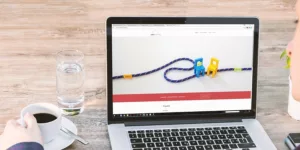Websites that are not well designed tend to malfunction and get Google Analytics not very favorable metrics (for example, high bounce rates, little site time, and low conversions). So, what does a good web design do? Next we will explore the 10 principles of web design that will make your site aesthetically pleasing, easy to use, attractive and effective. You may ask a web designer or web Design Company here, cheapwebdesign.co.uk. Here are the 10 principles to make a good web design:
1. Purpose
Are users on the Internet looking for information, entertainment, and some kind of interaction?
A good web design always meets the needs of the user. Each page of a website must have a clear purpose, that is, satisfy a specific need to users in the most efficient way possible. If the page serves its purpose then, more time on the web and lower bounce rate.
2. Communication
People on the web tend to want information quickly, so it is important to communicate clearly and make the information easy to read and digest. Some effective tactics to include in your web design are: organize the information using headlines and subtitles, short paragraphs of no more than 20 words or 3 lines and use bullets.
3. Typography
There are many different sources but in general the Sans Serif fonts (they are contemporary-looking sources without decorative finishes) such as Arial and Verdana, which are the easiest to read online and maintain readability.
The ideal font size for easy online reading is 16px. Although the size is smaller in tablets and mobile phones, we have to keep in mind that these devices are closer to our eyes.
4. Colors
A well thought-out color palette is essential to improve the user experience. The complementary colors create balance and harmony. The use of contrasting colors for the text and the background will make reading easier on the eye. Vibrant colors create excitement and should be used sparingly (for example, for buttons and calls to actions). Last but not least, blank spaces are very effective in giving the webs a modern and clear appearance and that they are not saturated with elements.
5. Images
People remember 80 percent of what they see and only 20 percent of what they read.
An image can speak a thousand words, and choosing the right images for your website can help with brand positioning and connection with your target audience.
If you do not have high quality professional photos, consider using a photo bank to buy them for the look of your website. Also consider the use of infographics, videos and graphics, since these can be much more effective in communication than even well-written text.
All types of images must be optimized before uploading to the web to reduce loading time.
6. Navigation
Navigation refers to how easy it is for people to move on your website. An effective navigation includes a logical hierarchy of pages, use what is called bread crumbs (they mark the navigation path the user has made), design clickable buttons and follow the rule of three clicks, which means that users will be able to find the information they seek in three clicks.
7. Basic provisions
Grid-based layouts organize content into sections, columns and tables that line up and feel balanced, leading to a better website design. Randomly placing content on your website will give a sense of messy appearance.
8. Design in pattern “F”
Eye tracking studies have detected that people scan computer screens in an “F” pattern.
Most of what people see is the top and left of the screen and the right side of the screen is rarely seen. Instead of trying to force the viewer’s visual flow, effectively designed websites will work with the reader’s natural behavior and display the information in order of importance (from left to right and top to bottom).
9. Loading time
Everyone hates a website that takes a long time to load. Optimize the size of the images (size and scale), combine code in a CSS or JavaScript file (this reduces HTTP requests) and minimize HTML, CSS, and JavaScript (compressed to speed up the loading time) help to reduce the load time of a web page.
10. Adaptable to all types of devices
Now it is common to have access to websites from several devices with several screen sizes, so it is important to consider if your website is completely responsive (this means that your website will adjust to different screen widths). If your website is not mobile friendly, you can rebuild it in a responsive design or you can create a mobile-only site (a different website optimized specifically for mobile users).
Either way, these principles for designing an effective website can help your site be more attractive, useful and memorable for visitors. It is easy to create a beautiful and functional website simply by keeping these design elements in mind.








